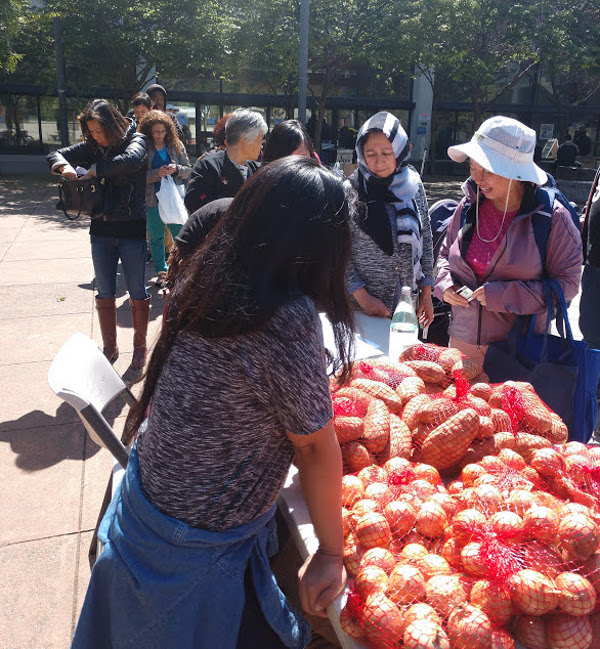
PHOTO/KEITH WELCH
OAKLAND, CA — Why is there food insecurity on the Laney College campus, when we have one of the largest Culinary Arts Departments in the Bay Area? Why is food insecurity a problem in the great state of California while it leads the world in agriculture production? What are student leaders and faculty doing about food insecurity on campus? No more excuses, no more talk, and no more denial. The problem has to be dealt with.
I‘ve attended Laney College for four years and am President of Associated Students of Laney College (ASLC). I’m a Culinary student, and was homeless for a time.
I asked Chefs Lorianne Raji and Laurence Jackson, both veteran Culinary professors at Laney College, if they knew about food insecurity on campus. Both said housing cost is a big problem facing students because it leads to food insecurity, and it leads to shrinking enrollment and high drop-out rates.
High rents are driving students further and further from Oakland and Laney College. Many students have to travel up to three hours a day to and from Laney. When you were paying $1,200 and your landlord raises your rent $600, you’ve got to move. Over 10% of students are homeless; they sleep where they can, couch surfing with family members and friends, or sleep in cars, public transit, or outside.
And there’s no shortage, with 5,000 empty housing units in Oakland, and 3,600 new units being built just in 2018. But these average $2,226 or more a month. They’re very profitable for giant corporations, but no one in poverty can afford them.
Scott Strong, Laney Food Service Manager, spoke with colleague Peter Brown about the problems facing food service for students who need to nourish their brains for effective study. Laney Food Service is not subsidized, it’s required to break even. Shrinking enrollment means less customers, but the cost of running a kitchen and cafeteria doesn’t shrink, so prices rise. Fewer students can afford the more expensive food, and reduced hours serve less people. It was once supported by public education funds.
Laney College is tackling the food insecurity problem short-term with food banks and a weekly food pantry on campus, but there is more work to be done. As president, I’m proud to say that ASLC is leading the way; it provides funds to all student clubs, and all student events on campus. Since I demanded it in 2016, all food for ASLC events is provided free by the Culinary Arts club, and has fed over 12,000 students. I plan a Housing Summit at Laney College in May.
But housing and food are more than a problem, they’re a catastrophe; something has to be done to end hunger and homelessness forever in a world of plenty.
Housing and food are human rights, and it’s our government’s responsibility to provide every human being food in their belly and a safe place of their own to call home. Sleeping in your own bed, cooking food in your own kitchen and taking a bath in your own tub is a wonderful feeling.
